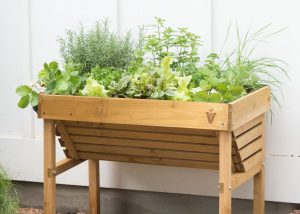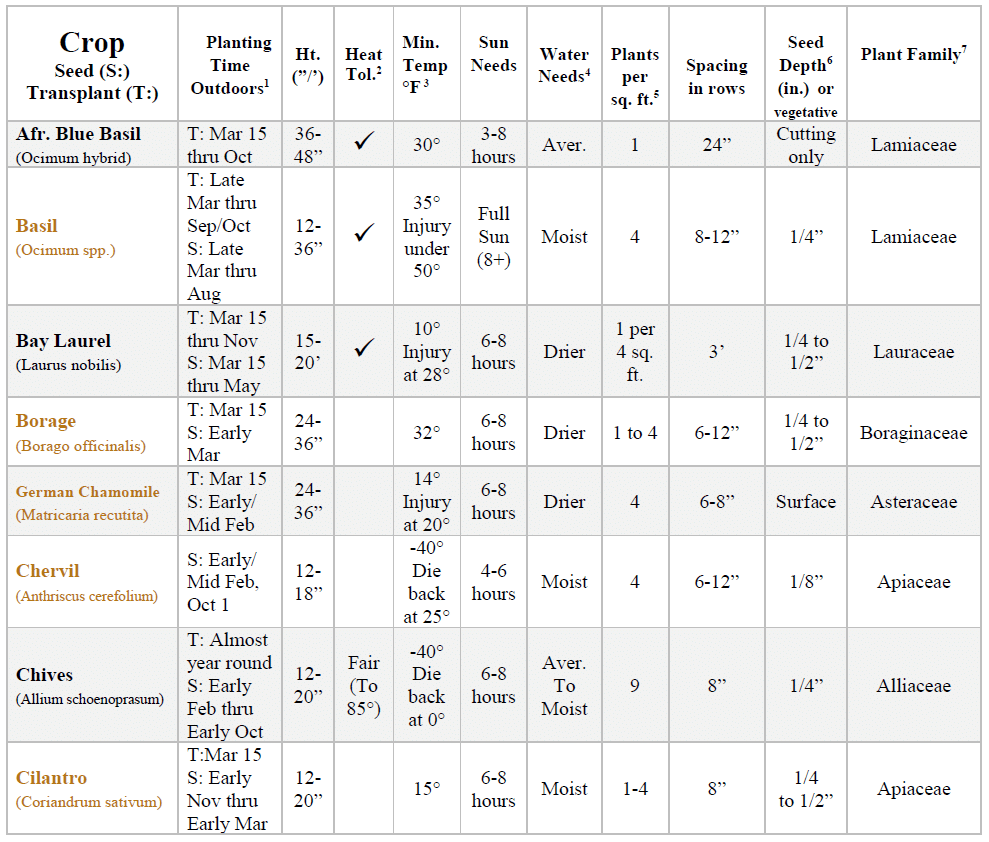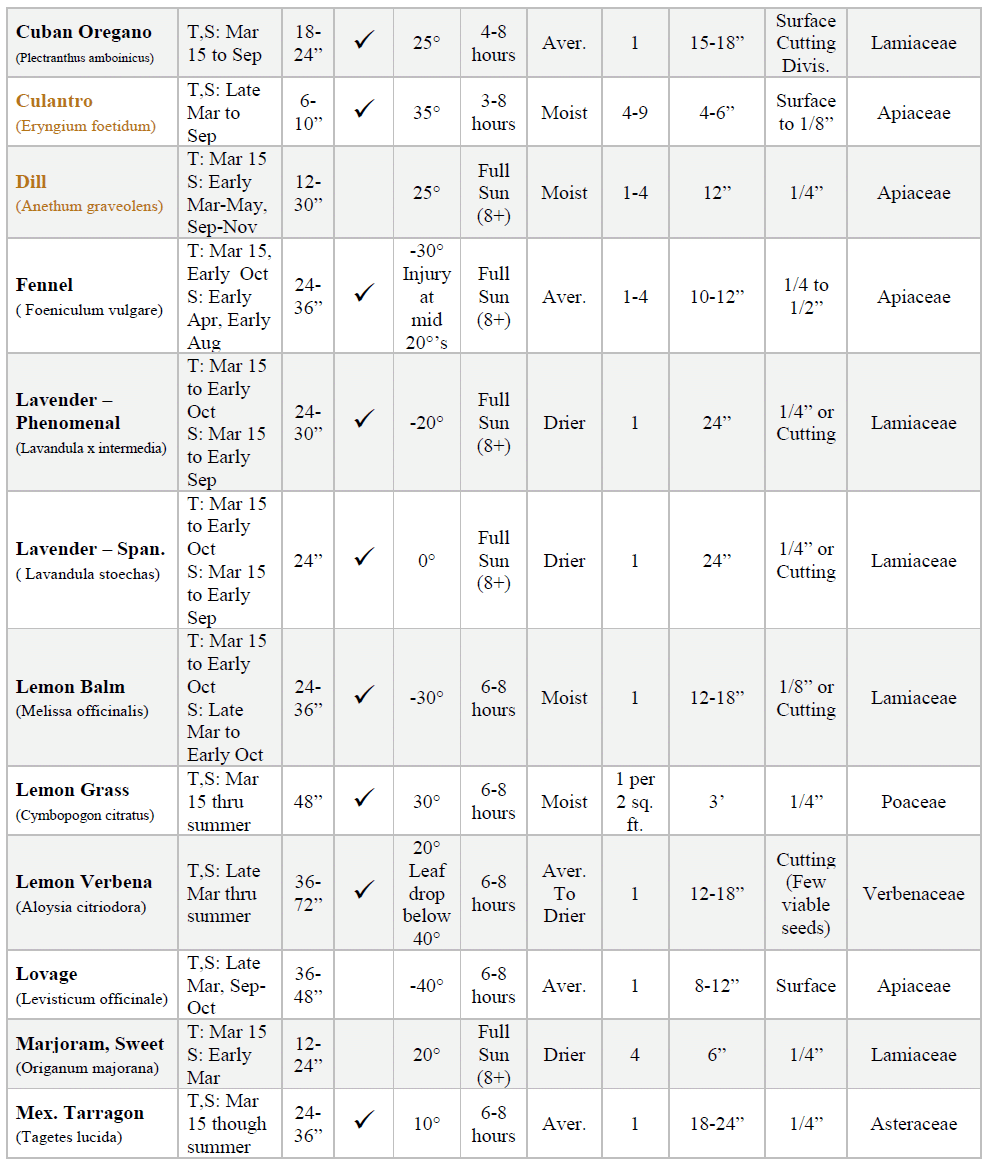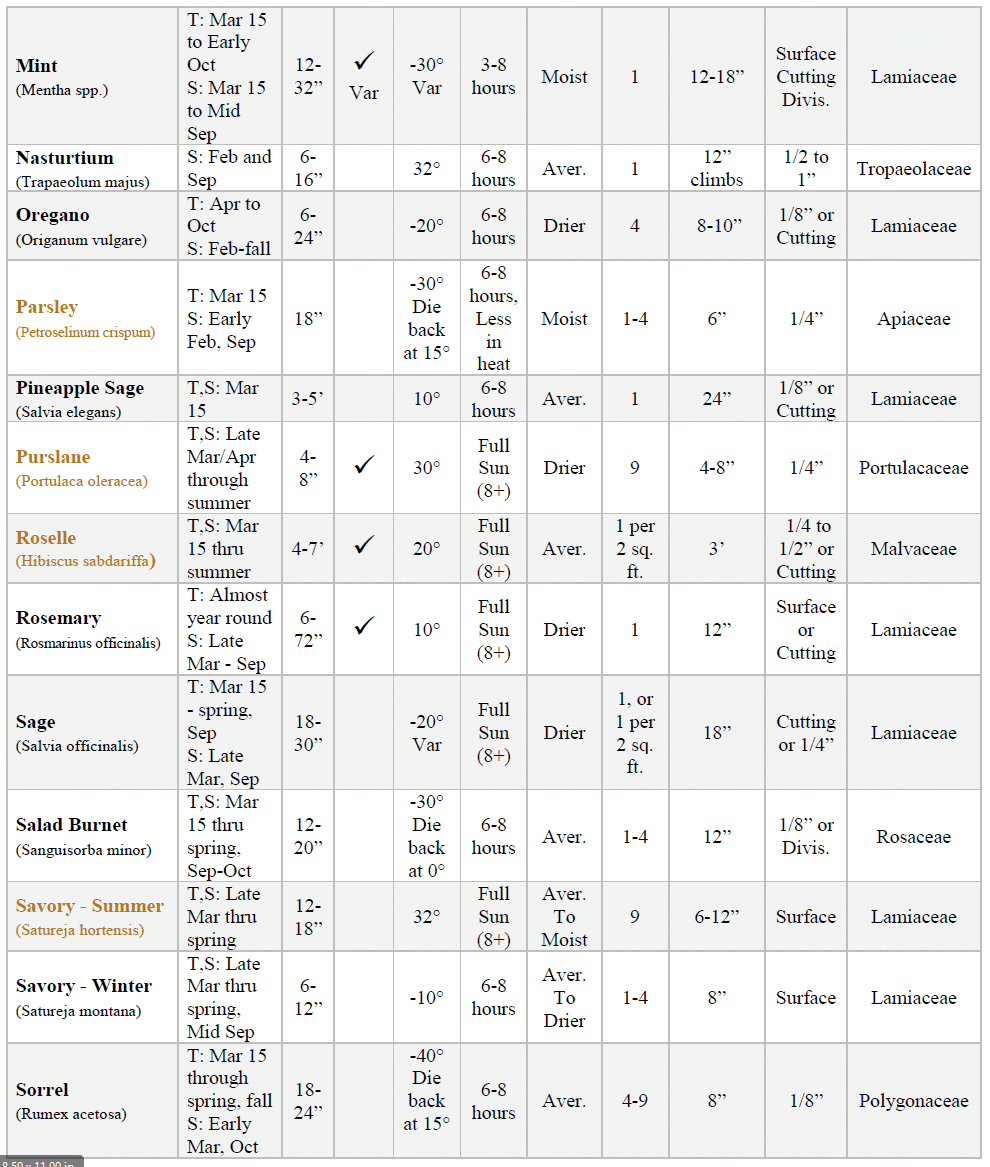
Planting Guide for North Florida Culinary Herbs
Click Here to view or download this guide as a PDF.
Consider this planting guide for North Florida culinary herbs to prepare for a healthy and delicious harvest.




Plants in brown are annuals or biennials.
North Florida is all of Florida north of State Road 40. We are in USDA Hardiness Zone 9a and 9b (minimum expected winter temperature of 20°), and AHS Heat Zone 8 (91-120 days > 86°). See the updated USDA Plant Hardiness Zones at www.planthardiness.ars.usda.gov.
1 Planting Time Outdoors is for transplants/plants (T) or seeds (S). Timing assumes that the average last frost date for the year is Mar 15 and average first frost date is Dec 3.
2 Heat Tolerant – able to grow in North Florida summer temperatures and humidity.
3 Min. Temp F° – the minimum temperature a plant can experience and survive. Damage, die back (plants resprout in the spring) and reduced harvest for the season may occur at warmer temperatures. Variations can be caused by several factors such as age of plant, length of cold, root establishment and type of cultivar.
4 Water needs – as with all plantings, this is the moisture recommendation after establishment.
5 Square Foot Gardening technique.
6 Although the seeds of most plants don’t need light to germinate, those of many of the herbs do. When an entry lists “Surface”, the seeds are to be scattered on potting soil in a container or on prepared garden soil, and lightly pressed against the soil (good contact improves moisture retention). If outdoors, they should be lightly dusted with a very fine cover of soil or vermiculite to protect the seed. Indoors, no cover is needed. The goal is to shield the seed from drying out but allow exposure to light. Use a fine mist spray to keep moist until germination.
If only a vegetative option is listed, either seed may not be produced, is sterile or has very low viability, seed produced plants wouldn’t have desired qualities of the parent, or vegetative propagation is much easier.
7 Rotate plant families. Avoid successively planting herbs from the same family in the same area of the garden.
Although often available as plants, culantro, nasturtium, parsley, dill, borage, cilantro, chervil, and fennel are more typically grown from seed because they can be difficult to transplant. If not grown in a biodegradable pot, use care when transplanting these.
How to fertilize: In general, herbs should be fertilized moderately to avoid stimulating lush growth that is less flavorful. Fertilize at half recommended amount when you do fertilize, if herbs are in garden soil. Container grown plants may need more fertilizer.
From our office in Atlantic Beach and satellites throughout Northeast Florida, Rockaway Inc proudly serves both commercial and residential landscape design, maintenance, lawn care, irrigation, and outdoor living carpentry client needs in Jacksonville, St Augustine, Atlantic Beach, Neptune Beach, Jacksonville Beach, Ponte Vedra, Nocatee, St. Johns, and Fernandina Beach.
